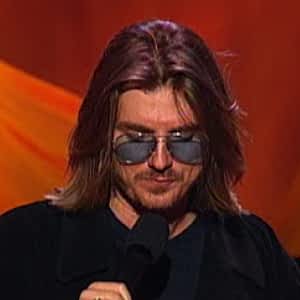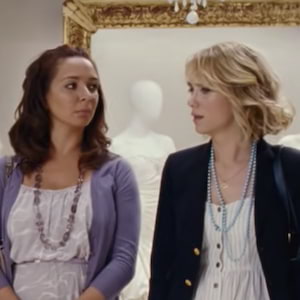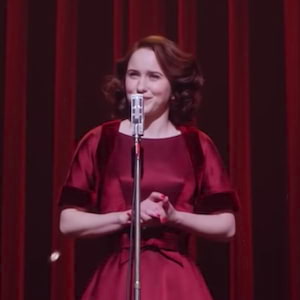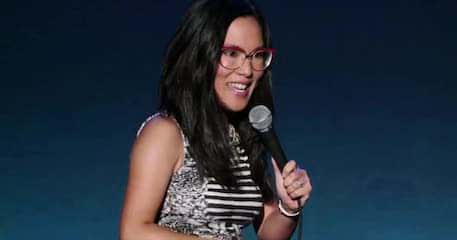More story structure
One-liner jokes Setup & Punchline
Film / TV Show

Mitch Hedberg

Bridesmaids

The Marvelous Mrs. Maisel
Laughter Climax
And then, because we're hippies, I'd be like, "Hey, hey! Please look me in the eye and remember to come with intention, OK?" And then, I would jump on him, and hold onto his neck, and I would just twerk, twerk, twerk, the shit out of him...and do some of this shit that I learned in Atlanta. [grunting] And then I would turn upside down immediately afterwards...to make sure all of that Harvard nectar would just drain inside of me. That's right, 'Cause I don't wanna work anymore.
More story structure
One-liner jokes Setup & Punchline
Film / TV Show

Prev
Next
Here is every line from Ali Wong’s stand-up comedy special, Baby Cobra.
We’re going to explain why her hour-long routine is so great.
But first, know
that you can tap on the right to skip forward. Try it! you can click on the right to skip forward. Or use the keyboard.<>
Nice! Ok, back to Ali Wong’s comedy special...
We noticed something special about 50 minutes into the show.
Each marks noticeable audience laughter. The circle size denotes how long the audience laughed.
In fact, this moment had the most laughter in the entire show. We’ll call it the “laughter climax.”
Why was this moment so funny? After dissecting it, we’re going to show you how form—the structure of the entire routine—played a big role. Form made the joke funnier.
We discovered this when we set out to understand the laughter climax.
First, we looked for the beginning of the story that triggered it. With its starting point, we could see how the story developed into the biggest laugh.
The laughter climax is about conception. We worked our way backward to see how she arrived at that topic.
The punchline about conception was preceded by a reference to being a hippy, which was preceded by a description of a man’s face during orgasm.
We kept working backward, and we ended up slicing the entire routine into self-contained topics, yielding a map of all subject matter in the comedy special.
Yet when looking at the entire routine, we noticed that some of these topics weren’t so separate. For example, let’s examine the first three minutes of the show.
She has a whole digression about HPV that’s divided into three parts: everyone has it, men don’t get it, and Ali’s experience at the doctor.
But the reason she got to the topic of HPV was because of her difficulty falling asleep.
And the reason she is talking about falling asleep: she’s jealous of other women who can fall asleep, as well as their metabolism and inner thigh clearance.
Generally, a comedian’s stories will flow from one to another, but there’s often no collective “point” The outcome of an hour-long stand-up routine is different from other long-form compositions (e.g., films, books, plays).
But if you take a step back, Ali’s routine is structured around three cohesive ideas: getting older, marriage, and pregnancy.
Let’s put this into context. If you’re studying theatre, literature, or film, you make sense of the work by breaking down its plot or form.
In film, for example, the smallest, irreducible unit is the “beat,” described by screenwriting instructor Robert McKee as “an exchange of behavior in action/reaction.”
Those small pieces—the beats—build a scene...
...and scenes build an act. We analyze the division and subdivision of a story to understand what it’s about.
And we find that we can do this with Ali Wong’s routine. Unlike some stand-up, it adds up into something bigger. She’s telling not just 100 individual jokes, but a story that is deliberately arranged, much like a comedy film or a TV series.
We can think of comedy as a spectrum, from one-line jokes to a feature film.
As we move from left to right, we have more topic continuity and use of structure. The humor requires and builds off of context.
Ali Wong’s stand-up is closer to the right of this spectrum, relying less on one-liners and more on form-driven humor. It helps makes her routine great, and the jokes hit for different reasons than we sometimes expect in stand-up. The laughter climax is one example of this.
Let’s zoom in again on the laughter climax to see why.
We can tie this punchline to a larger three-minute story about making babies.
It also “calls back” to three other topics from earlier in the routine.
The laughter climax is meta funny. For 50 minutes, Ali has built a universe, with each joke expanding the audience’s understanding of her world-view.
The laughter climax connects the major themes of her routine, from how she met her husband to her philosophy on working. When the punchline hits, the seemingly disparate stories snap together.
You get the same feeling when reaching the end of a great Seinfeld episode or any multi-plot story—the delight in seeing all the plotlines converge into one (and realizing that the storyteller was crafting a deeper idea all along).
Screenwriting educator Robert McKee devotes a large part of teaching to story structure. Screenwriting is not about the exact words said (i.e., the jokes) but the pattern of events and the meaning behind them. For example, here’s a point about structure that he makes in screenwriting bible Story...
“If, however, we were to put the content of their films aside for the moment, and
study the pure patterning of their events, we’d see that, like a melody without a lyric, like a silhouette
without a matrix, their story designs are powerfully charged with meaning.”
“Stripped of its surface of
characterization and location, story structure reveals his personal insight into the deepest patterns and
motivations for how and why things happen in this world––his map of life’s hidden order.”
This is what we get when stand-up isn’t just joke after joke after joke.
The structure of her routine leaves us with something more, much like a film short or a play would. Her hour-long show is different because we see her world-view. We understand her experience being pregnant.
We learn Ali’s “map of life’s hidden order.”